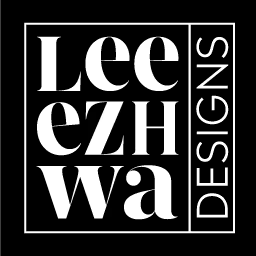Pretty Isn’t Enough
I used to think my job was to make things pretty. Clean slides. Sharp logos. Elegant typography. And for a while, that was enough. People clapped. Clients smiled. Work got approved.
But here’s the truth: pretty doesn’t change anything. Pretty gets polite applause. Pretty is safe.
The moment my career shifted was the moment I stopped aiming for pretty and started aiming for undeniable. Work that didn’t just look good, it landed, it moved, it stuck.
Because when you see things others don’t, you don’t want to just decorate. You want to push harder, further, stronger. You want to make them see.
The Problem: The Trap of “Pretty”
Design culture is obsessed with aesthetics. Dribbble, Behance, Instagram, endless feeds of slick, polished visuals. Pretty portfolios get likes. Pretty decks get “nice work” emails.
But pretty rarely moves the needle.
The data backs it:
- A Nielsen Norman Group study found that visually appealing design only increases credibility when paired with substance. Eye candy alone doesn’t hold trust.
- A Harvard Business Review analysis revealed that companies investing in design strategy (not just design polish) outperform their peers by 228% over 10 years.
- A McKinsey report on “The Business Value of Design” showed that design-led companies grew revenues and shareholder returns twice as fast as their industry counterparts.
Pretty is surface. Undeniable is strategy.
Personal Anecdote: The Deck That Changed Everything
The turning point came during a high-stakes pitch presentation. I had been asked to “clean up” a slide deck. Translation: make it pretty.
But as I dug in, I saw the problem wasn’t the visuals. The problem was the story. It was scattered, confusing, and forgettable. Making it pretty would only polish the chaos.
So I rebuilt it. I cut half the slides. I reframed the narrative. I used bold imagery instead of bullet points. I paced the flow like a film script, tension, release, climax.
When we presented, the room changed. Executives leaned forward. They weren’t just looking; they were listening. And when it ended, they didn’t clap politely. They sat in silence for a beat, then said: “That was unforgettable.”
That’s when I knew: pretty wasn’t enough. I wanted my work to be undeniable.
Framework: From Pretty to Undeniable
Here’s the difference:
Pretty: Pleases the eye. Decorative. Safe.
Undeniable: Hits the gut. Persuasive. Sticky. Transformative.
How do you make work undeniable?
Anchor in Vision. Ask: what’s the one truth this design must make impossible to ignore?
Strip the Noise. If it doesn’t serve the truth, cut it.
Design for Memory. Use story arcs, metaphors, and visuals that stick in the brain.
Push Beyond Approval. Aim for impact, not politeness. If it’s forgettable, it’s a failure.
Measure Reaction. Did it move them? Did it change behavior? That’s undeniable.
Steve Jobs and Vision
Steve Jobs embodied this shift. He didn’t just want pretty products. He wanted undeniable ones.
Jobs famously said: “Design is not just what it looks like and feels like. Design is how it works.”
That philosophy redefined entire industries. The first iPhone wasn’t just pretty. It was undeniable. You couldn’t go back once you experienced it.
And Jobs pushed his teams mercilessly toward vision. Former Apple designer Jony Ive recalled: “Steve would push us until we could see what he saw. And once we did, it was obvious. It was undeniable.”
That’s the bar. Not pretty. Undeniable.
Data: Why Undeniable Wins
The numbers prove it:
According to Stanford’s Graduate School of Business, stories are remembered up to 22x more than facts. Design that tells a story = undeniable.
The Design Management Institute found that design-led companies outperformed the S&P 500 by 211% over 10 years. Not because they were pretty, but because they were undeniable.
Neuroscience research shows that emotionally resonant design triggers the amygdala, making experiences long-term memories rather than fleeting impressions.
Pretty pleases. Undeniable persuades.
ADHD and the Drive to Push Further
For my ADHD brain, “pretty” has never been enough. Safe, surface-level polish bores me. My dopamine system demands more: depth, novelty, impact.
That’s why I push harder, further, stronger. ADHD makes me restless in the best way, unwilling to settle for decoration when transformation is possible.
And yes, that restlessness got me in trouble in corporate settings where “good enough” was the goal. But outside of those walls? It became my superpower.
Actionable Takeaways
If you want to stop making things pretty and start making them undeniable:
Ask the Bigger Question. Don’t start with “how should this look?” Start with “what must this make impossible to ignore?”
Kill Politeness. If the work is just “nice,” it failed. Aim for “memorable,” “provocative,” or “moving.”
Story First, Visual Second. Structure the narrative before polishing the slides.
Measure Reaction, Not Approval. Did it move them? Did it change decisions? That’s success.
Push One Step Further. Each project, take one element beyond safe, one visual, one story beat, one bold choice.
Conclusion: Undeniable or Nothing
The moment I stopped chasing pretty and started chasing undeniable, everything shifted. Clients stopped clapping politely and started remembering. Work stopped being decoration and started being impact.
Because pretty is optional. Undeniable is survival.
So ask yourself: are you designing to decorate, or are you designing to change?
Because in the end, the world doesn’t need more pretty things. It needs undeniable ones.
Still Hungry?
Don’t stop here. If this post lit a spark, you’ll want to dive into more ideas cut from the same cloth, sharper thinking, bolder design, and zero fluff.
The Day I Fired My “Inner Impostor Boss”
How ADHD magnifies impostor syndrome and what it takes to shut it down.
From Corporate Costume to Thin Creative Skin
Why hiding behind conformity kills originality and how authenticity is your new armor.
Permission Slips for Reinvention - Why no one else is going to hand you one.
Stop waiting for diplomas, managers, or permission... write your own slip.


